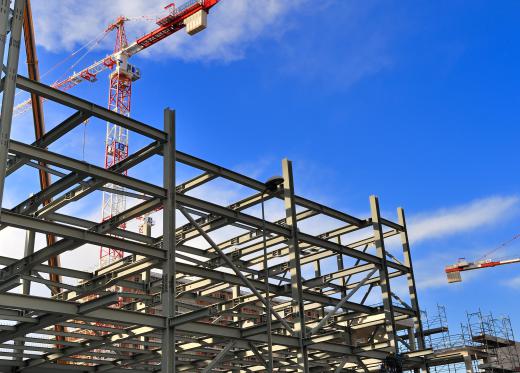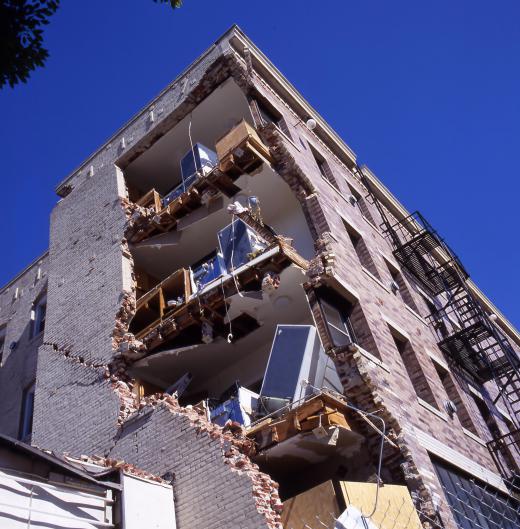A shear wall is a wall that is designed to resist shear, the lateral force that causes the bulk of damage in earthquakes. Many building codes mandate the use of such walls to make homes safer and more stable, and learning about them is an important part of an architectural education. Architects are obliged to think about these and other safety features when they design a structure so that they can accommodate the walls to make the structure sound while also aesthetically pleasing.
When a shear wall is built, it is constructed in the form of a line of heavily braced and reinforced panels. In some regions, they are known as braced wall lines for this very reason. The wall ideally connects two exterior walls, and also braces other shear walls in the structure. Bracing is accomplished with metal brackets and heavy timbers or support beams that keep the wall strong and sturdy.

An effective wall of this type is both stiff and strong. Stiffness alone will not be enough, as the stiffer something is, the more brittle is becomes; a cracker, for example, is stiff, but no one would rely on it in an earthquake. Strength alone is also not sufficient, because objects can be extremely strong, but still very giving. A stiff, strong wall, on the other hand, resists lateral forces while providing support.

In multi-story structures, shear walls are critical, because in addition to preventing the failure of exterior walls, they also support the multiple floors of the building, ensuring that they do not collapse as a result of lateral movement in an earthquake. When a building has a story without these walls, or with poorly placed ones, it is known as a soft story building, referencing the idea that the story without reinforcement will be soft and vulnerable in a crisis.
Because these walls are structural in nature, they cannot be moved or cut open. This is an important issue for homeowners to consider when building a structure from the ground up; it's a good idea to think about how uses of the space might change, to ensure that this wall does not become a nuisance later. For people buying a home and thinking about remodeling, finding out which walls are shear walls and which walls are not is a very wise thing to do before purchase, in case remodeling plans hinge on the removal of a wall that cannot be touched.
Ever since she began contributing to the site several years ago, Mary has embraced the exciting challenge of being a About Mechanics researcher and writer. Mary has a liberal arts degree from Goddard College and spends her free time reading, cooking, and exploring the great outdoors.

